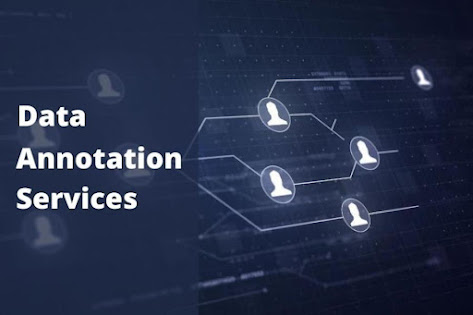Framing Information: A Deep Dive into Video Annotation Services
In a world that increasingly communicates through visual narratives, videos have become the lingua franca of the digital era. They capture life in motion, encapsulating nuances that static images or text might miss. For Artificial Intelligence (AI) to interpret these fluid narratives as seamlessly as the human brain does, a meticulous framework of understanding is essential. This is where video annotation services come into play, translating the dynamic language of videos into structured data that machines can comprehend. Let's embark on a deep dive into the intricate world of video annotation services.
Understanding Video Annotation
Unlike static images that capture a single moment in time, videos portray sequences of events. Video annotation, therefore, involves labeling individual frames and sequences with relevant information, enabling AI models to identify and interpret patterns, movements, and temporal changes.
The Spectrum of Techniques
Video annotation is not monolithic. Several techniques cater to diverse requirements:
Bounding Boxes in Motion: Here, objects of interest are encased within rectangular boxes across sequences, enabling object tracking over time.
Semantic Segmentation: This involves classifying each pixel of every frame, providing a granular understanding of scenes and contexts.
Polygon Annotations: For objects that don't fit neatly within rectangles, polygonal annotations capture their shape with precision.
Skeleton Annotation: Especially relevant for human postures and movements, this method marks key anatomical landmarks and connects them, providing insights into body mechanics.
Event Tagging: Beyond object recognition, this involves marking significant events or actions within the video timeline.
Challenges Unique to Videos
Annotating videos isn't merely an extension of image annotation; it presents its own set of challenges:
Temporal Consistency: Ensuring continuity and consistency in annotations across frames is crucial.
Volume: Videos are essentially sequences of images. A short video can have thousands of frames, making the task voluminous.
Dynamic Contexts: Objects can change in appearance, lighting conditions can vary, and backgrounds can shift—all within a single video.
Applications that Rely on Video Annotations
The meticulously annotated videos fuel numerous AI applications:
Surveillance and Security: AI models can detect suspicious activities, track individuals of interest, or manage crowd dynamics.
Sports Analysis: Coaches can dissect game footage to analyze player movements, strategize plays, or assess opposition tactics.
Healthcare: Video annotations assist in monitoring patients, interpreting medical imaging dynamics, or guiding robotic surgeries.
Entertainment: Automated video editing, content recommendations, or visual effects rely on annotated data.
Ethical and Privacy Considerations
As with all data-driven endeavors, video annotation comes with its ethical considerations:
Consent: Videos often capture people, necessitating informed consent for annotation, especially in public spaces.
Bias and Representation: It's essential to ensure diversity in annotated videos to prevent AI models from inheriting biases.
Data Security: Annotated videos, especially in sensitive sectors like healthcare, must be protected against breaches or misuse.
The Future of Video Annotation
Emerging technologies promise to elevate the domain of video annotation:
Augmented Reality (AR) and Virtual Reality (VR): These technologies require understanding videos in 3D space, pushing the boundaries of traditional annotation methods.
Real-time Annotation: As applications demand instant insights from videos, real-time annotation will gain prominence.
Granularity in Annotation: Beyond the Obvious
While basic annotations like bounding boxes and polygons focus on objects, there’s a growing emphasis on granular details:
Attribute Annotation: Beyond just identifying an object, this defines specific attributes. For example, not just identifying a car but specifying its make, model, color, or even the state of damage.
Relationship Annotation: This captures the relationship between objects. In a traffic scene, it could define if a car is "in front of" a pedestrian or "beside" a bike.
Tools and Platforms
A variety of platforms, both commercial and open-source, cater to video annotation needs:
VGG Image Annotator (VIA): Developed by the Visual Geometry Group, it’s an open-source tool suitable for a variety of annotation tasks.
Labelbox: A popular commercial platform that offers tools for both image and video annotations, integrating machine learning and human expertise.
CVAT (Computer Vision Annotation Tool): An open-source web-based tool tailored for annotating videos and images for computer vision algorithms.
The Role of Community: Crowdsourcing Annotations
The sheer volume of video data has led to the rise of crowdsourced annotation platforms, where a vast community contributes to the annotation task:
Amazon Mechanical Turk (MTurk): This platform allows businesses to distribute micro-tasks, including video annotation, to a large pool of contributors.
CrowdFlower (now Figure Eight): It leverages a global workforce to annotate data, providing layers of quality assurance.
The Interplay with Audio Data
Videos are not just visual. The accompanying audio track often provides critical context. Thus, multimodal annotation, which combines both visual and auditory data, is becoming increasingly relevant:
Synchronization: Ensuring that audio annotations (like transcriptions or event markers) align seamlessly with video frames.
Contextual Understanding: A clap, a scream, or ambient noise can provide context to the visuals, making audio-visual annotations pivotal for holistic understanding.
Evolving Paradigms: Transfer Learning & Pre-trained Models
The machine learning community recognizes the effort that goes into video annotations. To mitigate this:
Transfer Learning: Models pre-trained on vast datasets can be fine-tuned with a smaller set of newly annotated videos, reducing the volume of required annotations.
Semi-supervised Learning: Models first trained on a small set of annotated data can be used to annotate larger datasets, which are then verified and refined by human annotators.
Conclusion
Video annotation, in all its complexity, stands as a testament to the lengths the AI community is willing to go to ensure machines understand the world as humans do. Globose Technology Solutions Pvt Ltd (GTS) recognizes the transformative power of accurately annotated visual data and is committed to providing exceptional video annotation services. By ensuring high-quality annotations, GTS contributes to the growth and success of industries that heavily rely on visual data. As technology continues to evolve, video annotation services stand as an essential pillar, enabling machines to understand and interpret the visual world around us.

.gif)




Comments
Post a Comment